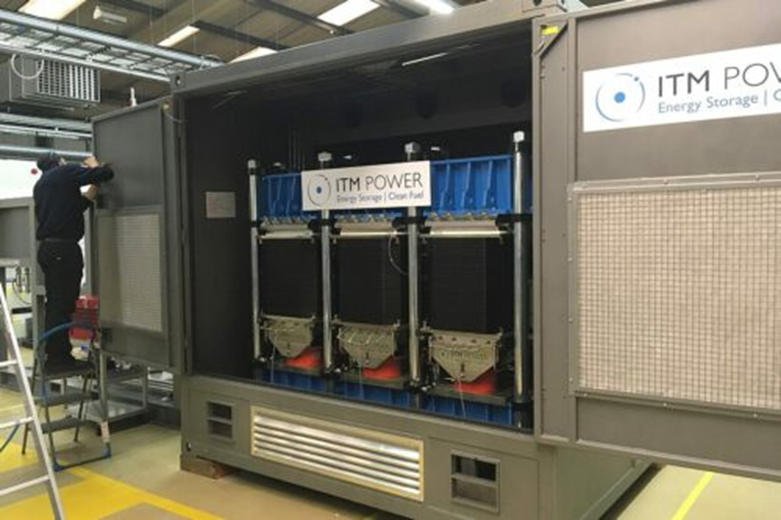Green hydrogen, produced using renewable energy and electrolysis, is crucial for decarbonizing industries. However, traditional methods rely on freshwater, raising concerns about resource scarcity. Researchers at IIT Madras are making waves with a prototype for generating green hydrogen directly from seawater!

Why Seawater?
Freshwater electrolysis, while effective, puts pressure on freshwater resources. Seawater electrolysis offers a sustainable alternative, using a virtually limitless resource.
The IIT Madras Prototype
The IIT Madras prototype for green hydrogen production from seawater boasts several key innovations that address challenges and improve efficiency. Let’s delve deeper into each:
1. Carbon-based Electrodes:
- Traditional electrodes for electrolysis often use precious metals like platinum or iridium. These metals are expensive, and seawater can cause them to corrode quickly.
- The IIT Madras prototype utilizes carbon-based electrodes. Carbon is:
- Abundant and inexpensive: A significant advantage over precious metals.
- More resistant to corrosion: Seawater’s salinity has a lesser impact on carbon electrodes, leading to longer lifespans and lower maintenance costs.
- However, carbon electrodes can be less efficient than some metal catalysts for hydrogen evolution. This is where the next innovation comes in…
2. Transition Metal Catalysts:
- To compensate for any potential efficiency drop with carbon electrodes, the prototype employs transition metal catalysts. These include elements like iron, copper, cobalt, etc., which are:
- Relatively inexpensive and readily available: Compared to precious metals.
- Efficient catalysts: They accelerate the hydrogen evolution reaction on the cathode, boosting overall hydrogen production.
- By strategically placing these transition metal catalysts on the carbon electrodes, the researchers aim to achieve a balance between cost-effectiveness, corrosion resistance, and efficiency.
3. Cellulose-based Separator:
- During electrolysis, it’s crucial to separate the hydrogen and oxygen produced at the electrodes. A membrane separator allows ions to flow between the electrodes while preventing the produced gases from mixing.
- Traditional separators can be expensive and susceptible to degradation in harsh environments like seawater electrolysis.
- The IIT Madras prototype utilizes a cellulose-based separator. Cellulose is:
- Renewable and biodegradable: A more sustainable choice compared to traditional materials.
- Potentially cost-effective: Cellulose is readily available and can be processed efficiently.
- Promising barrier properties: Cellulose-based membranes have shown potential for efficient ion transport and gas separation in electrolysis applications.
The Synergy:
These innovations work together to create a promising solution for seawater electrolysis:
- Durable electrodes: Carbon minimizes corrosion risks.
- Enhanced efficiency: Transition metal catalysts boost hydrogen production.
- Sustainable and potentially cost-effective: Cellulose-based separator offers eco-friendly and potentially cheaper operation.
Further Considerations:
While these innovations are promising, ongoing research is needed to:
- Optimize the composition and structure of the carbon electrodes and transition metal catalysts for maximum efficiency and durability.
- Fully characterize the cellulose-based separator to ensure its long-term performance and suitability for large-scale applications.
Challenges and the Road Ahead
While promising, the technology faces hurdles:
- Early Stage: The prototype is under development and needs further testing before commercialization.
- Corrosion: Seawater’s salinity can damage equipment.
- Desalination vs. Direct Use: Desalination, a common method for pre-treating seawater, is energy-intensive. Direct seawater electrolysis faces challenges but offers a more eco-friendly approach.
- Technology Readiness Level (TRL): The technology is currently at a low TRL, requiring further advancements for commercial viability.
The Future of Seawater Hydrogen
Despite the challenges, researchers are optimistic. This technology, if successful, could revolutionize green hydrogen production. The IIT Madras team is also exploring using industrial wastewater, expanding the potential source pool.
This research brings us closer to a future where seawater fuels our clean energy needs!
Leave a comment